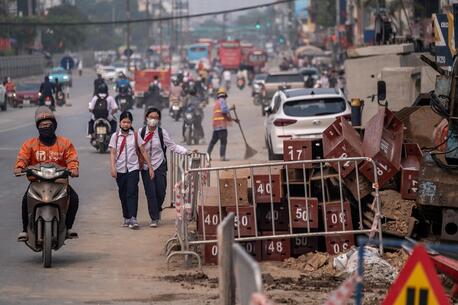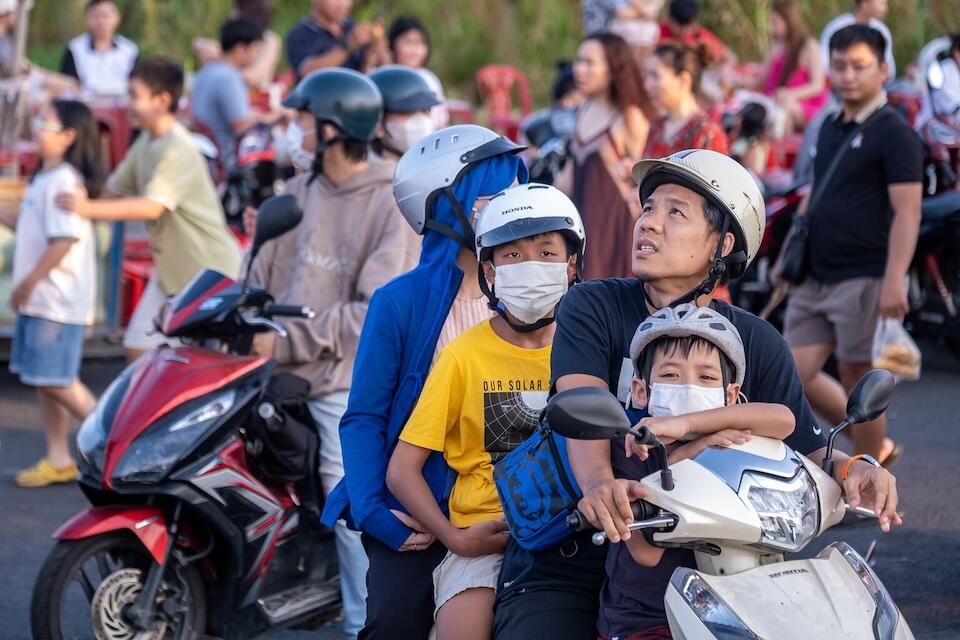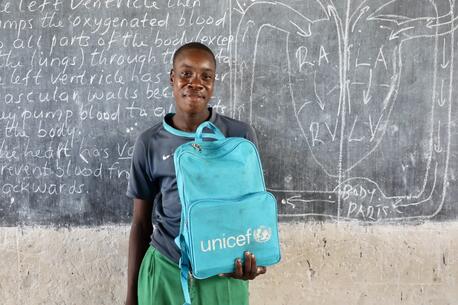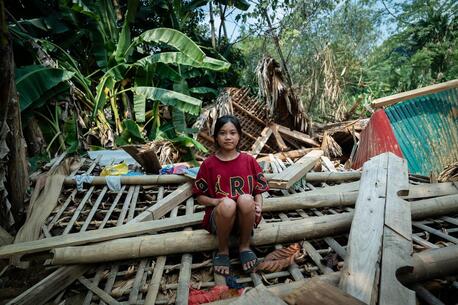
UNICEF and Partners Fight Air Pollution in Vietnam
Air pollution contributes to the death of hundreds of thousands of children under 5 worldwide every year; the majority of those deaths are linked to indoor air pollution. In Vietnam, a country plagued by poor air quality, UNICEF is working to address behaviors and strengthen policies and health care systems to meet the crisis.
Air pollution threatens children’s health globally
Air pollution is a threat to the health and survival of children everywhere and poses especially dire risks to children under age 5. The youngest children are uniquely vulnerable to the damaging effects of poor air quality and other environmental threats.
Air pollution has become the second leading global risk factor for death among all age groups, accounting for over 8.1 million deaths globally in 2021, second to malnutrition among children under 5, as noted in State of Global Air 2024, a recently released report analyzing air pollution’s disproportionate impact on children in more than 200 countries. UNICEF collaborated with the Health Effects Institute, an independent nonprofit research organization, and the Institute for Health Metrics and Evaluation (IHME) – both partners of the Children’s Environmental Health Collaborative – on the report.
In 2021, more than 700,000 children under 5 died from diseases linked to air pollution; this represents 15 percent of all global deaths in children in this age group. Every day, almost 2,000 children under 5 die because of health impacts linked to air pollution; 70 percent of these deaths are linked to indoor air pollution. Household air pollution primarily arises from cooking with polluting solid fuels like wood, coal and crop waste. The practice remains prevalent, mainly in Africa and Asia.
Tackling Vietnam’s household air pollution crisis
In homes across Vietnam, many families cook indoors over open fires, often in small, confined spaces. “We have been cooking indoors using firewood stoves for many generations,” says Sung Thi Sua, who lives in a commune in Dien Bien province, northwestern Vietnam. Although this longstanding custom brings families together, the fire’s smoke disperses harmful pollutants throughout the house and into the community.
When coal and firewood burn, they release particulate matter, a complex mixture of chemicals that penetrates human respiratory and cardiovascular systems. These particles are particularly hazardous to the most vulnerable: children, the elderly and pregnant women.
Children are more likely to suffer air pollution’s effects because they have higher breathing rates and inhale more air relative to their size. Children’s lungs, brains and other organs are immature, and their immune systems are still developing; this means that their bodies are not equipped with the same defenses as adults.
My family uses a firewood stove indoors with a lot of smoke coming out of it, which makes my eyes sting and causes me to cough. It's really irritating. — Ho Thi Du, Dien Bien province
“My family uses a firewood stove indoors with a lot of smoke coming out of it, which makes my eyes sting and causes me to cough,” says Ho Thi Du, a young girl living in the commune. “It’s really irritating.”
Short-term health effects like breathing difficulties, coughing and burning eyes often lead to or exacerbate other diseases including asthma, the most common chronic respiratory disease in older children. “Respiratory diseases are among the most frequently treated ailments at Dien Bien Provincial General Hospital,” said hospital pediatrician Dr. Pham Thi Kim Chi. Household air pollution is also a major risk factor for pneumonia, which is responsible for 1 in 5 child deaths globally.
Long-term exposure to indoor air pollution, especially when combined with other environmental factors like tobacco smoke, keeping family pets inside and dust from bedding and clothing, increases the risks for noncommunicable diseases in adulthood, including heart disease, stroke, diabetes, lung cancer and chronic obstructive pulmonary disease, many of which are life-threatening.
UNICEF is clearing the way to better health outcomes in Vietnam
UNICEF is working with Vietnam's Ministry of Health to strengthen primary health systems, deliver solutions that mitigate the impacts of indoor and outdoor air pollution and build capacity of health care workers to protect women and children from the health impacts of air pollution. In 2023, the Ministry of Health, with UNICEF’s support, finalized a guideline and trained 50 health care managers on measures to protect women and children from air pollution.
Equally important to improving household air quality is social and behavioral change. UNICEF works with community health workers and leaders to educate households on the steps they can take to protect their children from air pollution indoors. These include simple recommendations like using cleaner fuels and technologies to cook and heat the home, ensuring that cooking areas are well ventilated, keeping children and pregnant women away from burning stoves and avoiding smoking tobacco in the home In 2023, UNICEF’s outreach helped to increase the level of awareness among 14,500 caregivers on the dangers of air pollution and other environmental hazards on children's health.
Global efforts to change customs and behaviors have already yielded progress. According to the State of Global Air 2024 report, the death rate linked to air pollution in children under 5 has dropped by 53 percent since 2000 through actions that have expanded access to clean energy, increased awareness about the harms of household air pollution and improved health care.

Support from the Clarios Foundation helps drive collective action to protect children's well-being
The Clarios Foundation’s catalytic support to the Healthy Environments for Healthy Children (HEHC) program has contributed to global attention to protect children’s environmental health. The HEHC program works to mobilize collective action on children’s environmental health issues at global and national levels to secure the necessary prioritization, policy and capacity development. While strengthening the enabling environment for lasting results, the program focuses on strengthening frontline health services, community engagement and multi-sectoral action in support of a comprehensive primary health care response.
The program is making great strides towards its goal of protecting 171 million children under 5 from environmental degradation and climate change across three regions and 14 countries, including Vietnam. The UNICEF – Clarios Foundation partnership that supports HEHC, launched in 2020, has already increased awareness of children’s environmental health issues with 10 million caregivers, trained 7,720 health workers, engaged 2,995 youth, and supported seven countries in the integration of children’s environmental health into their health policies and primary health care.
HOW TO HELP
There are many ways to make a difference
War, famine, poverty, natural disasters — threats to the world's children keep coming. But UNICEF won't stop working to keep children healthy and safe.
UNICEF works in over 190 countries and territories — more places than any other children's organization. UNICEF has the world's largest humanitarian warehouse and, when disaster strikes, can get supplies almost anywhere within 72 hours. Constantly innovating, always advocating for a better world for children, UNICEF works to ensure that every child can grow up healthy, educated, protected and respected.
Would you like to help give all children the opportunity to reach their full potential? There are many ways to get involved.




